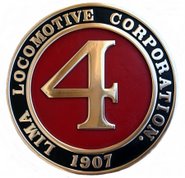This history was prepared by Robert Niles for the Eldorado National Forest in 1979. This segment concludes our reprint of serialized portions of Mr. Nile’s report.
The company prospered through the post World War II building era, but it became obvious that changing times and depleted timber holdings would soon force some important changes in operating policies. In 1952 a directive from the State Safety Commission ordered immediate instillation automatic couplers on the Diamond and Caldor railroad cars to replace the original link and pin coupling system.
Mr. Price and company directors calculated the cost of updating the equipment and faced with increasing maintenance cost of old trestles, road bed and locomotives decided to abandon the railroad. Diesel trucks would now be utilized for the entire log haul from woods landings to the mill at Diamond Springs.
Track crews were retained to take up the rails and this progressed from Caldor to Diamond Springs. Most of the remaining engines and obsolete equipment were brought in from Caldor and sold to a South San Francisco scrap dealer, Oscar Borovik. Abandonment of the line was completed in the spring of 1953.
A cutover timber land exchange with the U.S. Forest Service in 1952 for timber stumpage in the Caldor working circle sustained the mill operation for a few more years. The company then experimented with importing mahogany logs from the Philippines. These were shipped into a bay area port then loaded onto Southern Pacific Railroad gondola cars for delivers to Diamond Springs.
The sawmill and remaining cutover land were sold to Winton Lumber Company in 1956, who operated the facility on a limited basis for a short time. The entire mill operation at Diamond Springs were abandoned when the Winton Lumber organization sold their extensive timber holdings and facilities to American Forest Products Corp. in June 1964.
Subscribe to:
Post Comments (Atom)


No comments:
Post a Comment